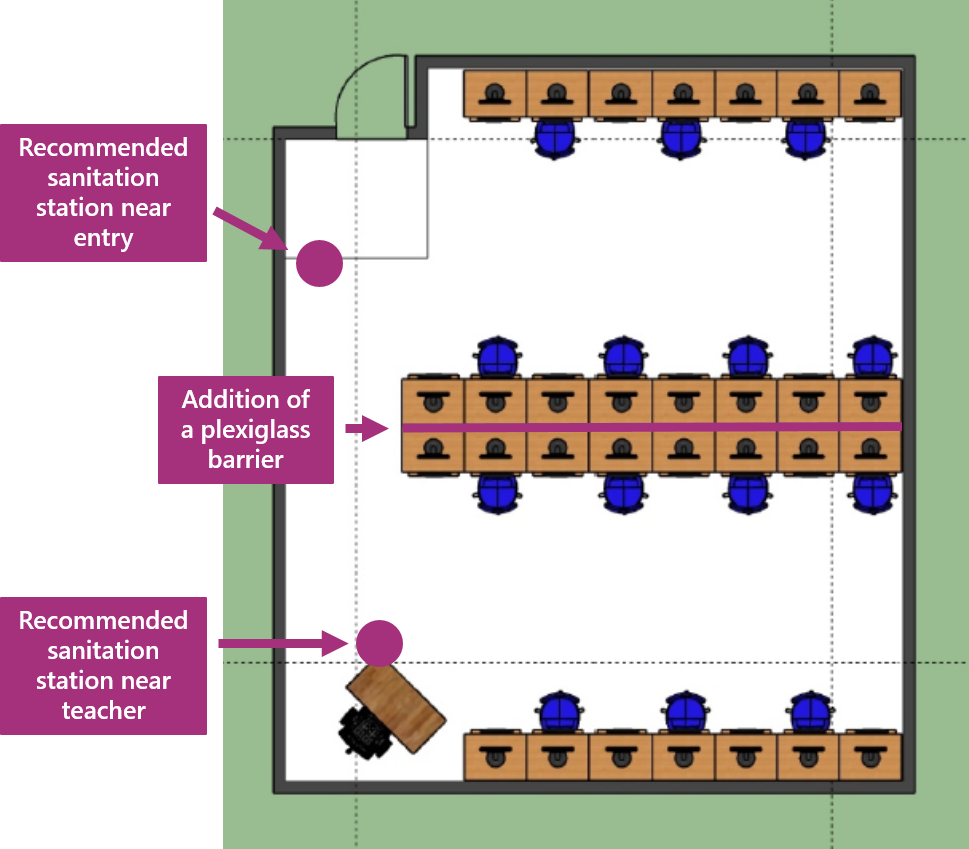COVID-19 Design Solutions: Assessing School Facilities for Readiness
How and when we go back to the physical school environment is understandably a hot topic. It not only involves the health and safety of our children, but also their ability to learn what they need to be successful adults. The longer the disruption and uncertainty, the tougher it will be to get back to normal — a “normal” that will inevitably look very different from what we’re used to. School districts are currently considering all sorts of scenarios and of those, there will still need to be an option for students to come back to the classroom. The challenge is to imagine what those classrooms will look like and to evaluate the changes that must take place as re-entry plans are established.
Proceed with care: School Resiliency Assessment 101
Leveraging decades of experience, our education design studio has developed a School Resiliency Assessment utilizing our existing Safety and Security Assessment, but expanded to include protocols for a virulent pandemic situation such as COVID-19. Evaluations are conducted by an integrated team of architects and engineers, ensuring all structures and systems are considered and that clients receive clear, relevant action items.
We’ve designed the School Resiliency Assessment to enable a safer environment for staff and students that is adaptable to the ongoing pandemic, the recovery phases, and beyond. It can help guide administration, staff, and governing officials as they plan, develop, and implement the procedures and resources needed to address each individual school, as well as school districts as a whole.

Each assessment will cover the following using the school’s observed re-opening plan and phased guidelines as a basis:
- Spatial/Physical (Social) Distancing
- Hygiene and Cleaning
- Safety and Security
- Health and Wellness
- Information Technology
What we review to design for readiness
For each School Resiliency Assessment, our specialized team of experts will first review the school’s re-opening plan, then tour and assess the school site and facilities to provide recommendations on how to best prepare for reopening within each district’s phased guidelines. We’ll look at best practices for physical distancing at site entry points and interior spaces, as well as diagram arrival, entry, interior circulation, and outdoor egress to provide wayfinding and signage options. We’ll also help determine ways to improve hygiene and cleaning based on the facilities layout, materials, surfaces, and equipment. Additionally, we’ll address potential health and safety upgrades for indoor air quality, ventilation, automated controls, and filtration.

Physical Distancing — Typical Classroom: This layout provides a six-foot radius around each person with the seat is centered in the circle.

Physical Distancing Specialty — Classroom: This layout depicts an example computer lab where face-to face seats are unavoidable.
To learn more about the School Resiliency Assessments and how we can help school districts prepare for the fall, reach out to me via the email contact button below, or download the one-pager and send a note to our Education studio lead, Corey Johnson.
Note: Cushing Terrell’s architects and engineers are not health and pandemic specialists. All recommendations are based upon their building design and systems knowledge, and best practices in making schools healthier environments. The parties acknowledge that the science and recommended practices regarding issues related to COVID-19 are continuously evolving and that it’s not possible to make an accurate long-term assessment of the possible impacts or issues that might develop in the future as a result of COVID-19.

Ronda Carlson, AIA, LEED BD+C, CPTED
Ronda has 25 years of experience as a project architect on a range of building types. For the past six years, she’s led teams focused on education projects throughout Montana and Wyoming. Through this work, she’s gained an increased awareness of the need for thoughtful security design strategies, not only in schools but across the project spectrum. Certified as a Crime Prevention Through Environmental Design (CPTED) practitioner, she helps drive change in the physical and social environment to reinforce positive behavior and reduce crime.


